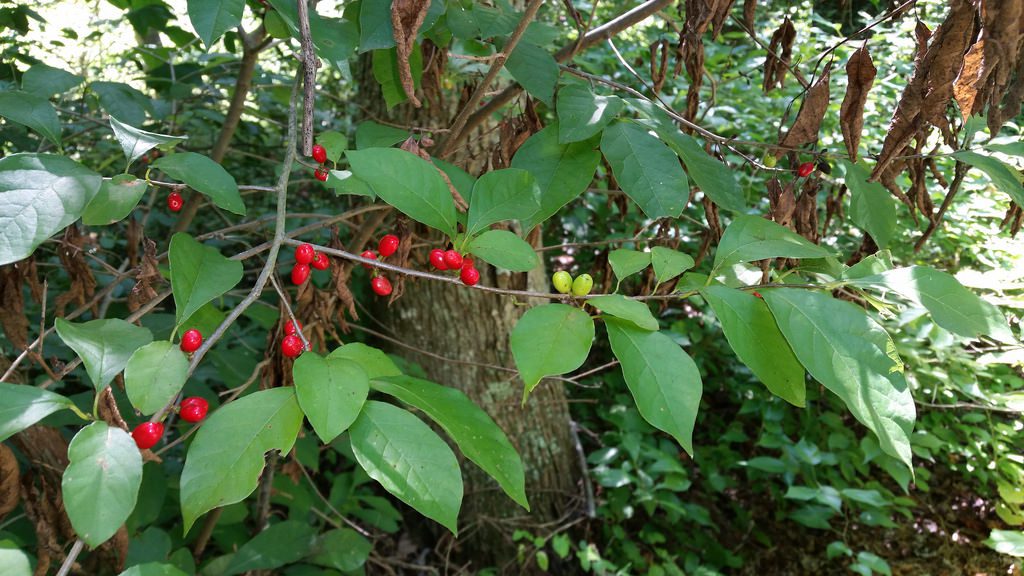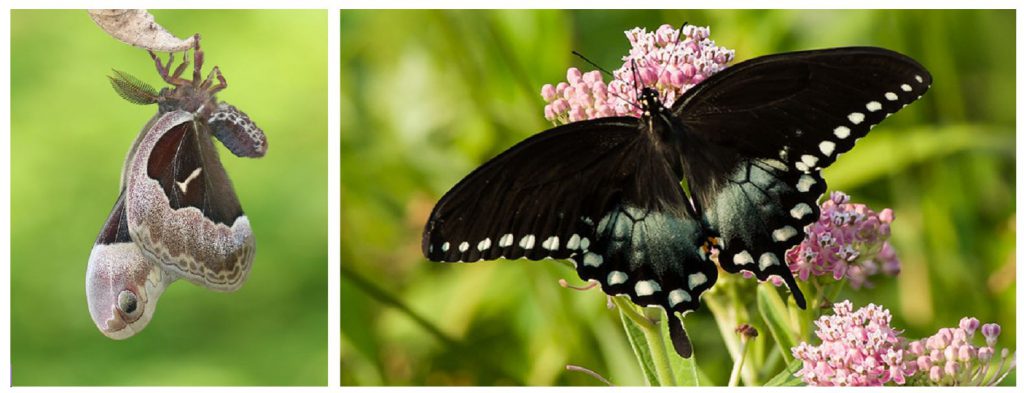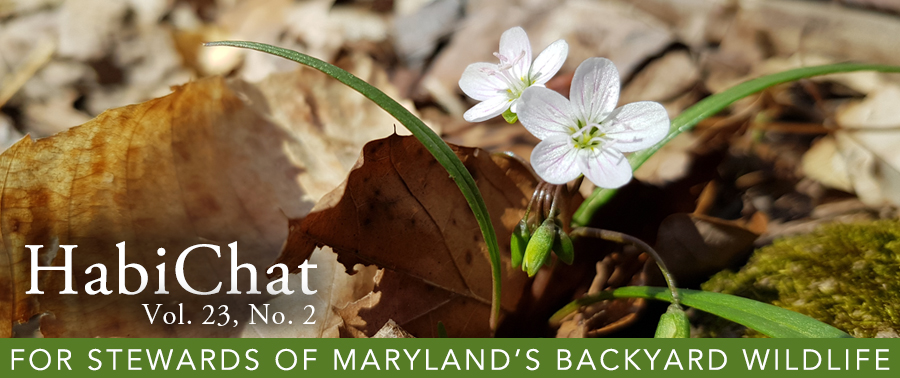Native Plant Profile: Spicebush (Lindera benzoin)

Spicebush; by Bill Hubick
I vividly remember my first experience with spicebush (Lindera benzoin) in undergrad. My professor broke one of the twigs and had us breathe in the lemony aroma. I was amazed at the spicy, citrus smell that emanated from the broken twig. I later learned this aromatic scent was a deterrent for potential herbivores.
Spicebush is a medium-sized, native shrub in the laurel family (Lauraceae). It has a rounded habit and grows up to 15 feet. Spicebush can tolerate dry to wet soils and prefers to grow in part to full shade. It can be found in every county in Maryland, but it grows best in basic soils.
In the spring, bright yellow clusters of flowers grace its branches. It provides an early nectar source for small pollinators such as bees, flies and even ants. Some plants have male flowers while others have female flowers. Therefore, it is important to have at least one of each to get pollination in your yard. Eventually, alternating elliptic leaves will emerge in late spring. In the fall, the leaves will turn a bright yellow color and will contrast sharply with its red fruits. The bark is gray in color and is dappled with white bumps known as lenticels.
Spicebush fruits are strongly favored by Wood Thrush and Veery. Other birds that consume the fruits include the Northern Cardinal, Gray Catbird, Great-crested Flycatcher, Eastern Kingbirds, Red-Eyed Vireos, and more. Gamebirds like the Bobwhite Quail will also consume the fruits. Several lepidoptera (butterflies and moths) will lay their eggs on spicebush. These species include the spicebush swallowtail, promethea moth and the tulip tree beauty.
Spicebush is relatively easy to grow in most environments. While deer often leave it alone, it can be susceptible to browse when young. Spicebush grows rather vigorously.

Promethea moths (left) and spicebush swallowtails (right) lay their eggs on spicebush. Spicebush Swallowtail by Ken Larson CC by NC ND 2.0
References:
Hilty, J. 2019. Illinois Wildflowers website. https://www.illinoiswildflowers.info/ Accessed April 4, 2019.
Happy Spring HabiChat fans!
Spring has officially sprung in Maryland. The migratory birds, like warblers, are currently making their way through our forest. Early nesting bee species are emerging from their nests and are pollinating spring wildflowers. Young wildlife can be seen in the garden. I’m so excited for all of the spring phenomena at play!
In this edition of HabiChat, learn about our native spicebush and the beautiful lepidoptera it supports, as well as a little more information about our state bird, the Baltimore Oriole. This edition will also focus on ways to rethink spring by embracing some of our early flowering native plants. Finally, this HabiChat will introduce you to a couple of books that might be of interest for enhancing your backyard wildlife habitat.
Spring is such a busy time in our gardens. If you are interested in making your garden more pollinator friendly, check out the Spring 2015 HabiChat issue. In addition, keep in mind that young wildlife will begin to be a common sight in backyards. Last year’s Spring HabiChat focused on bird-safe windows and deer resistant plants for pollinators. Check out our page, Think Twice Before Rescuing Young Wildlife, to learn about best practices when it comes to young animals.
As a final note, the University of Maryland Extension is holding a General Forestry Course for Maryland landowners. The goal of the course is for the landowner to design a forest stewardship plan framework for their property. The course covers all aspects of forests and forest management. Registration opens June 1 and the course runs from Sept. 1 to Dec. 15. The cost is $150. For more information, please visit the University of Maryland Extension site.
Happy Habitats,
Kerry Wixted
Click here to have HabiChat—the quarterly backyard wildlife habitat newsletter from the Wild Acres program—delivered right to your inbox!
In this Issue
Native Animal Profile: Baltimore Oriole
Native Plant Profile: Spicebush
Habitat Tips: Rethinking Spring with Native Plants
Habitat Tips: Books for Backyard Wildlife Gardeners


 1-888-373-7888
1-888-373-7888 233733
233733